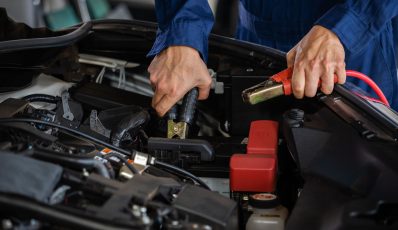Love your car? You’re on top of oil changes, filter checks, and quick fixes – but what about rust? No matter the brand or age, corrosion is the silent killer. Rust hits hardest where it’s most exposed – the underbody. Stick with us, and we’ll show you how to protect your car from rust like a pro.

Love your car? You’re on top of oil changes, filter checks, and quick fixes – but what about rust? No matter the brand or age, corrosion is the silent killer. Rust hits hardest where it’s most exposed – the underbody. Stick with us, and we’ll show you how to protect your car from rust like a pro.
Is rust protection really necessary for galvanised underbodies?
Back in the day, puddles, rain, and road salt had cars rusting in no time. These days, galvanised underbodies slow down the process with a zinc coating that protects metal from exposure to oxygen. Dipping covers the whole underbody, while spraying often leaves weak spots where rust creeps in. Damage from rough roads makes it worse. Even with galvanisation, regular checks and preventive measures are a must to keep rust at bay.
Rust removal and underbody protection: car care made easy
Noticed rust on your underbody? First, see how deep it goes. Surface rust? You’ve got this. Dealing with superficial corrosion is far easier than polishing your car. Here’s what you need:
- Gloves, a face mask, and goggles
- A drill with a wire brush attachment
- Sandpaper
- Brushes
- Rust remover and neutraliser
- Underbody rustproofing spray
Use a lift or a jack to access the underbody. Remove plastic covers and protect cables. If you can, take out the fuel tank. Clean off all the dirt, salt, and grime before getting started.
Once dry, grab the drill with the wire brush and strip away rust. Apply rust remover, let it work its magic, and then smooth the area with sandpaper. Add two layers of rust protection, letting each coat dry. Finish with a sealing layer for extra defence.
Why underbody protection is key to your car’s lifespan
Regular checks catch problems early, saving you from major damage. Miss surface rust, and it’ll dig deeper, weakening key parts and putting your safety at risk. A rusty underbody can even result in a failed MOT. Ignore it long enough, and you’re looking at costly repairs – or worse, a trip to the scrapyard.
Top tips for protecting your car’s underbody
From rust removers to tough coatings, there are loads of ways to safeguard your underbody:
- Rust removers: Sprays, pastes, or gels that dissolve rust. Gels and pastes are great for tricky spots as they stay put.
- Neutralisers: Clear out leftover acid or chemicals, stabilising the surface before sealing.
- Anti-corrosion primers: These act as a barrier, blocking moisture and oxygen while standing up to heat and UV rays.
- Protective coatings: Wax for quick fixes or heavy-duty bitumen/plastic coatings for serious durability.
Clean and dry thoroughly first, and don’t skip protective gear – some products are harsh. Apply evenly, covering every nook and cranny.
When to renew your underbody rust protection
For classic cars and older models, protect the underbody before winter. Salt, mud, and frost make this the riskiest season. Check 2–3 times a year for any issues.
Lightly galvanised cars need yearly treatment before winter, as budget coatings often miss spots. Regular checks can save you from surprises later.
For fully galvanised cars, an annual inspection is usually enough, but fix any scratches or rust immediately to keep corrosion in check.
Don’t forget your car’s exterior! Regular washes and wax keep the paint protected. Focus on door frames, sills, and wheel arches, and park in shaded spots when possible. Got plastic parts that need some TLC? Use the right care products to avoid cracks and fading, and learn how to polish plastic like a pro.






Share